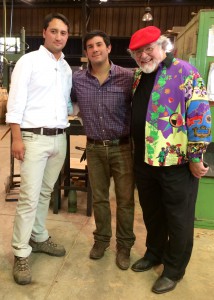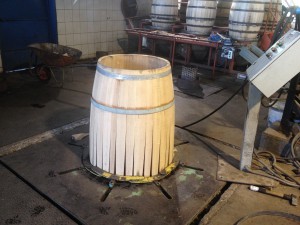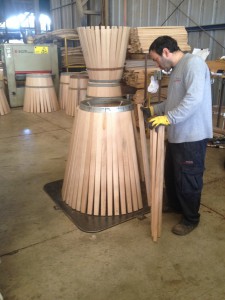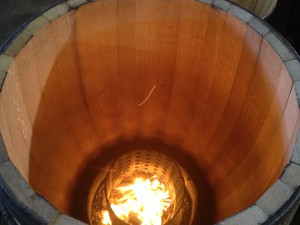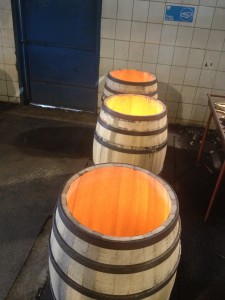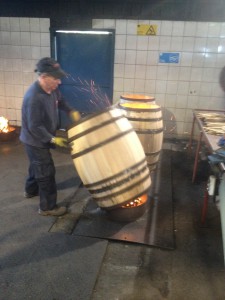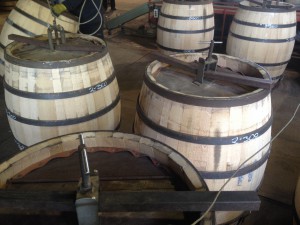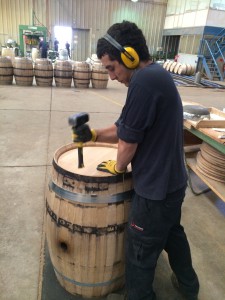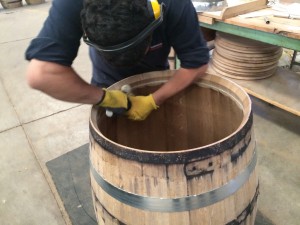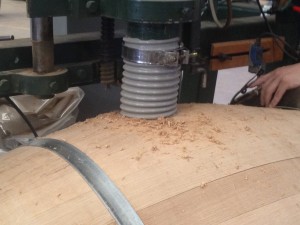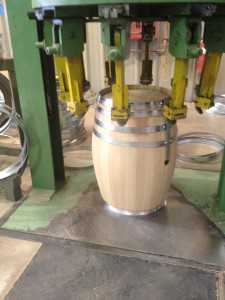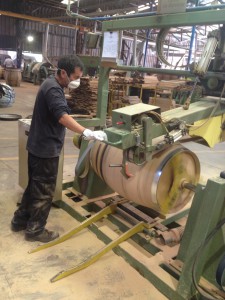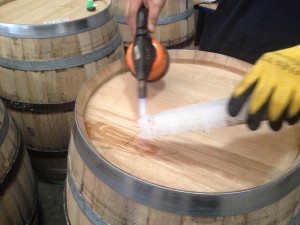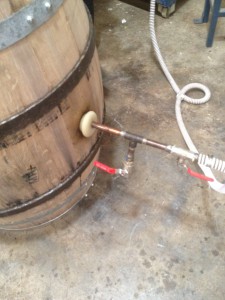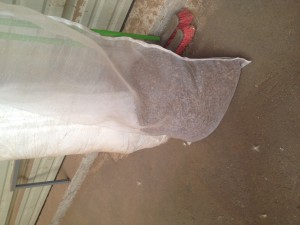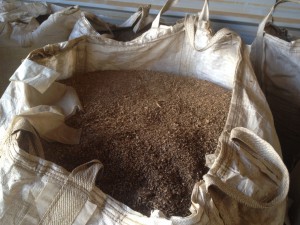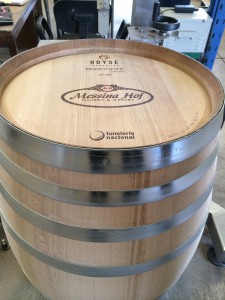Santiago, Chile 2015 – Day Two
02.04.15
Santiago, Chile 2015
Day Two – Toneleria Nacional Barrel Making
Not only are the Chilean and Texas flags similar, but the sense of independence and innovation can found also.
On a recent tour of the Toneleria Nacional barrel making facility outside of Santiago, with our hosts Felipe Verdejo (Oak Source Manager) and Hernan Forttes Vial (Sales Manager), we saw first-hand hi tech quality control and innovative convection barrel toasting.
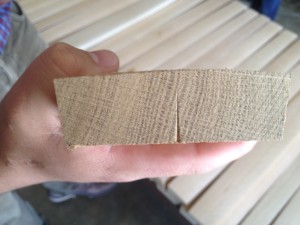
Shaped for Barrel Insertion
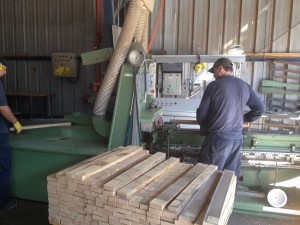
Staves Shaped & shaved for Barrel insertion
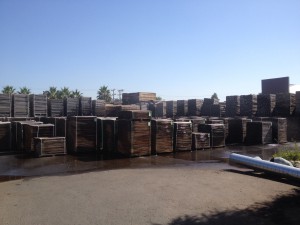
It all starts with the Wood
It all starts with the wood, air dried for 24 –36 months.Then the wood staves are shaved and shaped for barrel insertion. The barrel “tailor” fits the staves around a guide hoop to make sure the staves create a tight fit. Then the barrel goes into a steam room like a sauna so that the wood can get wet enough to be bent. 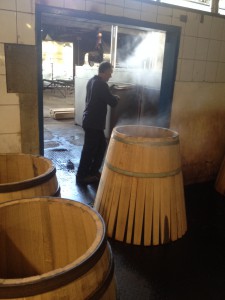 From the steam room the barrel is bent using a compression sleeve.
From the steam room the barrel is bent using a compression sleeve.
Once the bottom hoop is applied, the barrel is toasted by one of two methods. The first method, a patented innovation of Toneleria, is a convection method. Like a convection oven, hot air up to 240 degrees is infused and circulated in a sealed barrel for up to two hours. These barrels are called Odyse’ or Ambrosia. The second method is the traditional fire toasting method. In this method the barrel is placed over an oak flame and smoked. These barrels are called Mistral.
The bung hole is drilled into the side of the barrel and seared by fire. Then a groove is cut on the inside of the barrel. A paste of flour and sulfur is rubbed into the groove. Next the head of the barrel is inserted and tightened into place by securing the hoops.
The barrel is checked for leaks by using water and compressed air. If leaks are revealed, the leaking area is treated with heated wax. Each barrel is sanded on the exterior like a piece of fine furniture. Then the finishing hoops are appliedand logo is laser etched into the head of the barrel.
In addition, Toneleria makes oak alternatives. There is very little waste. One of the products is oak powder which is used in fermentation. Oak chips and blocks are used to effect the oak effect in aging.

